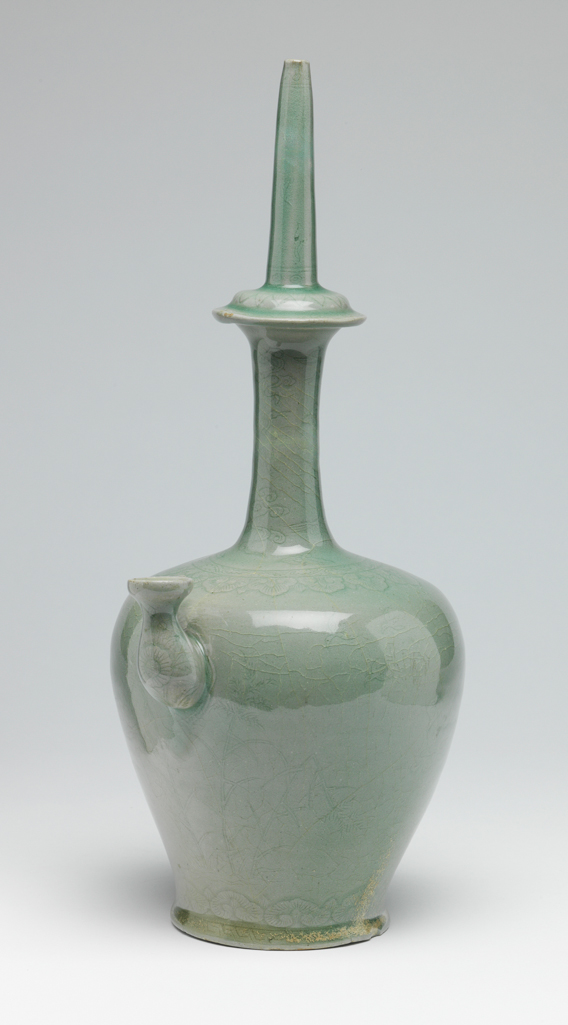Chongbyong. Kundika with willow and waterfowl design. This vessel has an ovoid body with a small spout on one side, and a long neck, with a flanged swelling in the centre. The lower part of the body contracts to a splayed footring, giving it a stable shape. The upper part of the long neck is cut into octagonal form, and has incised cloud motifs on each facet, while the projecting ring shows lotus petals and scrolling foliage. The lower part of the neck is decorated with flying cranes among clouds. A classic-scroll border and youi-heads are finely incised round the shoulder, and a key-fret border and further youi-heads round the foot. The body itself shows willow trees on one side and reeds on the other, with ducks and lotuses, flying cranes and geese delicately engraved between. Production Notes: This type of kundika, which is modelled on bronze examples decorated with silver inlay, was very popular in the Koryo dynasty. Both shape and design are very similar to the metal counterparts. The kundika (Chongbyong) was used in Buddhist ceremonies as a container for water, which was filled in through the spout and sprinkled from the narrow mouth. Similar sherds were excavated at kiln no.7, Sadang-ri, Kangjin-gun, South Cholla province, and were produced in the mature period of Koryo celadon, in the first half of the twelfth century. Production Place: Sadang-ri kilns. Kangjin-gun. South Cholla province. Korean. Stoneware, thrown, with applied lugs, incised and celadon-glazed, height (whole) 34.7 cm, diameter (maximum) 16.0 cm, diameter (foot) 9.0 cm, circa 1101 to 1150. Koryo Dynasty.
Image data
- Accession Number: C.55-1984
- Photograph copyright © The Fitzwilliam Museum, Cambridge.
- Aperture: f/22.0
- Focal length: 120
- Camera: Hasselblad H3DII-31
- Photographer name: Amy Jugg
- Image height: 1025 pixels
- Image width: 572 pixels
- Processed with: Adobe Photoshop Lightroom 5.4 (Windows)
- Filesize: 292.55kB
- Exposure time: 1/125
- ISO Speed: 100
- Fnumber: 22/1
Key words
12th Century
celadon
Chongbyon
Fitz_AA
glazed
green
incised
Korean
Koryo Dynasty
kundika
neck
pale green
pottery
Sadang-ri ware
slender
spout
spouted
stoneware
tall
thrown
vessel
water bottle
waterfall
willow




